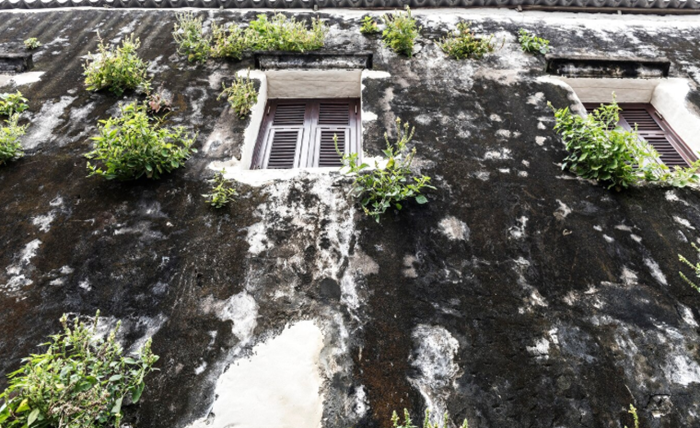Your roof plays a critical role in protecting your home, but many homeowners overlook subtle signs of deterioration like the presence of moss and algae. While these green invaders may seem harmless or even quaint, they pose serious risks to the longevity and structural integrity of your roofing system. If you’re a homeowner or property manager, understanding the dangers of moss and algae is essential to maintaining a safe, functional, and long-lasting roof.
What Causes Moss and Algae Growth on Roofs?
Moss and algae thrive in damp, shaded environments. North-facing sections of the roof, areas shaded by trees, or regions with high humidity are particularly vulnerable.
Algae, specifically Gloeocapsa magma, is a common culprit. It appears as black streaks running down your shingles and feeds on the limestone filler in asphalt shingles. Moss, on the other hand, is a non-vascular plant that appears as a green, thick carpet-like growth. Both organisms retain moisture, which exacerbates the deterioration of roofing materials.
Structural Damage: The Slow But Serious Threat
One of the most alarming dangers of moss and algae is their ability to trap moisture. Moss grows in thick mats that can lift shingles as it expands. This exposes the underlayment and decking of your roof to water intrusion, leading to wood rot and weakening the structure beneath.
In colder climates, this problem intensifies due to freeze-thaw cycles. Water retained by moss can freeze overnight, expanding and causing shingles to crack or become dislodged. Over time, what starts as a cosmetic issue can evolve into a full-blown structural hazard requiring extensive repairs or even a full roof replacement.
Reduced Lifespan of Roofing Materials
Roofing systems are designed to withstand years of exposure to the elements, but moss and algae can significantly shorten that lifespan. The continuous moisture retention causes roofing materials to break down prematurely. Asphalt shingles, in particular, are vulnerable because the granules that protect against UV rays can be loosened by the acidic by-products of algae.
Left untreated, a roof that might have lasted 20-25 years could start failing in half that time. The cost of early replacement is often far higher than routine maintenance and cleaning.
Impact on Energy Efficiency
Many homeowners are surprised to learn that moss and algae can also affect energy efficiency. When roofing materials deteriorate, they lose their ability to reflect sunlight, which can result in higher indoor temperatures and increased cooling costs during warmer months. Additionally, moss creates an insulating layer that retains heat and moisture both of which compromise your home’s ability to regulate temperature effectively.
By addressing moss and algae early, you can maintain your roof’s reflective capabilities and potentially reduce your energy bills.
Voided Warranties
Another often-overlooked consequence of moss and algae growth is the potential to void your roofing warranty. Many roofing manufacturers specify that improper maintenance or environmental damage including biological growth can nullify warranty coverage.
Routine inspections and cleanings are often part of the warranty requirements. Failing to remove moss or algae may lead to denied claims in the event of a leak or other issue, leaving homeowners responsible for costly repairs.
Aesthetic and Property Value Concerns
Curb appeal matters not just for pride of ownership but also for property value. A roof streaked with algae or covered in moss can make your home look neglected. This is especially important if you’re planning to sell your home; potential buyers may see roof stains as a red flag that suggests more significant underlying issues.
Real estate agents often note that visible roof problems can decrease a home’s value or prolong its time on the market. Keeping your roof clean and healthy ensures it enhances and does not detract from your home’s overall appearance.
Prevention and Maintenance Tips
Preventing moss and algae from taking hold starts with good roof hygiene. Here are some effective strategies:
- Trim Overhanging Branches: This reduces shade and improves air circulation on the roof surface.
- Clean Gutters Regularly: Clogged gutters can lead to standing water that encourages moss growth.
- Install Zinc or Copper Strips: When it rains, these metals release ions that inhibit moss and algae growth.
- Schedule Professional Cleanings: Soft washing by an experienced contractor removes growth without damaging the shingles.
- Choose Algae-Resistant Shingles: When installing a new roof, consider materials with built-in protection.
For homeowners looking for reliable roofing Des Moines services, it’s important to work with professionals who understand both the aesthetic and structural importance of a clean, healthy roof.
When to Call a Professional
If you notice black streaks, green patches, or damp areas on your roof, it’s time to consult a roofing expert. DIY solutions can be risky and might do more harm than good especially if high-pressure washing is used, which can strip away protective granules from shingles.
A qualified contractor will assess the extent of the growth, recommend safe removal methods, and check for any hidden damage caused by moisture. Whether you’re dealing with minor discoloration or a full carpet of moss, taking action sooner rather than later is always the best approach.
When it comes to reliable and trustworthy Des Moines roofing solutions, hiring a local expert ensures you’re getting advice tailored to your region’s climate and common roofing issues.
About Open Air Exteriors
Open Air Exteriors is your trusted partner for residential and commercial exterior services in the Des Moines area. We specialize in roofing, siding, gutters, and storm restoration with a commitment to quality, transparency, and customer satisfaction. Whether you need a full roof replacement or a simple inspection, our experienced team is here to help you protect your biggest investment your home.


